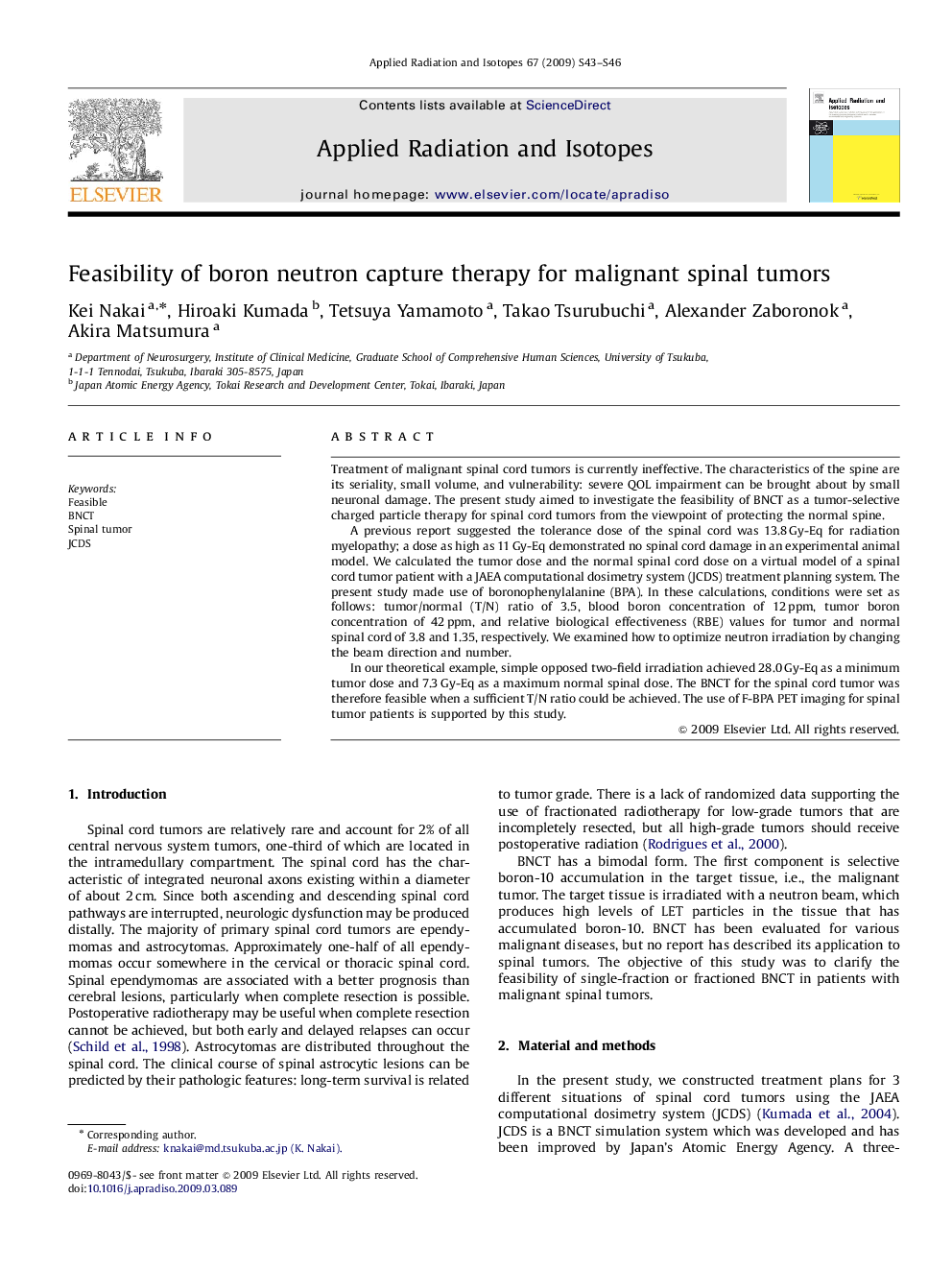| Article ID | Journal | Published Year | Pages | File Type |
|---|---|---|---|---|
| 1876883 | Applied Radiation and Isotopes | 2009 | 4 Pages |
Treatment of malignant spinal cord tumors is currently ineffective. The characteristics of the spine are its seriality, small volume, and vulnerability: severe QOL impairment can be brought about by small neuronal damage. The present study aimed to investigate the feasibility of BNCT as a tumor-selective charged particle therapy for spinal cord tumors from the viewpoint of protecting the normal spine.A previous report suggested the tolerance dose of the spinal cord was 13.8 Gy-Eq for radiation myelopathy; a dose as high as 11 Gy-Eq demonstrated no spinal cord damage in an experimental animal model. We calculated the tumor dose and the normal spinal cord dose on a virtual model of a spinal cord tumor patient with a JAEA computational dosimetry system (JCDS) treatment planning system. The present study made use of boronophenylalanine (BPA). In these calculations, conditions were set as follows: tumor/normal (T/N) ratio of 3.5, blood boron concentration of 12 ppm, tumor boron concentration of 42 ppm, and relative biological effectiveness (RBE) values for tumor and normal spinal cord of 3.8 and 1.35, respectively. We examined how to optimize neutron irradiation by changing the beam direction and number.In our theoretical example, simple opposed two-field irradiation achieved 28.0 Gy-Eq as a minimum tumor dose and 7.3 Gy-Eq as a maximum normal spinal dose. The BNCT for the spinal cord tumor was therefore feasible when a sufficient T/N ratio could be achieved. The use of F-BPA PET imaging for spinal tumor patients is supported by this study.
